Legacy Build: ICM 1:35 Model T Great War Ambulance
THE LEGACY BACKSTORY
My grandfather, Roger Allen Burrell (1894-1981), was born in Spokane, Washington to Alexander Burrell and Abigail née Kiersted. While his mother's Dutch heritage reached back into early 17th century colonial New York (then New Netherland), his father Alexander had immigrated from Scotland to the United States as a lad in the mid-19th century with his family under the leadership of his father, Archie Burrell. The Burrells settled in the Chicago area where Alexander grew up.
After a business relationship with his brother failed, Alexander moved west and found success as an executive for a London-based mining and lumber firm. The Burrells lived a genteel life in Helena, Montana, with Alexander prospering in business and politics (as a state senator), and his wife serving the community through her charitable activities. It was while on a business foray in Spokane that Roger was born. He grew up a cowboy on the family ranch in Montana.
Roger was 16 years old when his mother, whom he adored, died from a botched surgery. As a child I remember my mother telling me how her father was miles away from home when a breathless ranch hand rode up and told him that if he wanted to see his mother one last time, he'd better hightail it home. My grandfather essentially destroyed his horse to make it to his mother's bedside before she passed. Five years later, when Roger was 21 and in his third year at the University of Wisconsin, his father, Alexander, died of a massive heart attack as he ate his breakfast porridge.
Now, all of this biography may seem little more than spurious and even self-indulgent backstory. But taking a step back one can perceive the profile of a young man who felt himself something of an orphan, was raised with an air simultaneously aristocratic and ruggedly adventurous, and who found himself at a place in history that made him a prime candidate for the decision he was about to make. The romantic idea of running off and joining the French Foreign Legion is the stuff of stories both serious and whimsical; for me, it is pretty close to family history, because in essence that's exactly what my grandfather did.
The man himself, Roger Burrell, my grandfather--rather a dashing figure with the smoke in his hand, don't you think? In an incredible coincidence of photographic record keeping, his SSU number (14) can be seen behind him on the side of an ambulance.
My grandfather's unit. Papa's the clean-shaven bloke standing second to the right of the man kneeling with the banner at center
My grandfather was hardly alone. Thousands of idealistic young prep-school Americans went to France before America formally joined the fight in 1918. Up to that point, they joined the AFS—the American Field Service, driving modified Model T's to ferry the wounded back from the front. [There are many online resources about the AFS, but I found this one to be concise and helpful: http://www.france24.com/en/20160218-france-world-war-i-battle-verdun-american-ambulance-drivers-usa. A good read is https://www.barnesandnoble.com/w/gentlemen-volunteers-arlen-j-hansen/1122495008, which was written by a personal acquaintance of my grandfather.] Truth be told, I can only guess the precise circumstances of my grandfather's going and returning from the Great War; he passed away before I was old enough to have the sense to ask him such questions. But by following this link: http://www.ourstory.info/library/drivers/WW1/rosterindex.html you'll be able to locate my grandfather's unit, his name, and his length of AFS service (4 months in 1917, achieving the rank of 1st Lieutenant; he completed the duration of the War under the U.S. Army Ambulance Service, which took over the AFS when America joined the fray in 1918). He obviously came back, eventually marrying and having five children, my mother his only daughter. My childhood memories of him summon a charming, peace-loving man of great patience and generosity who loved cigars and sent us top-shelf Texas grapefruit and Smokehouse almonds every Christmas, on top of other gifts.
Yet Papa (as we called him) left quite a legacy of information in the form of over 200 photographs he took in the field. Most of them would be important only to him—candid character studies of the men he served with, French and American, and specific places and experiences that marked him. He even handed the camera to a friend now and again so that we might see the younger him. For my model-building purposes, this never-before-published collection of Papa's photos was a goldmine. I was able to ascertain with great precision what the ambulances he drove looked like and consequently had the information I needed to create accurate markings and modify the ICM kit for a truer (if not perfectly accurate) legacy build. The truth is, Papa probably drove any number of different vehicles with his SSU (Section Sanitaire [États-] Unis), which happened to be #14. I chose the markings of one vehicle that seems particularly prominent in his photographic record (#35431).
Scores of AFS Model T ambulances during a respite.
Some pretty remarkable field photos of AFS ambulances in action. The links provided above indicate that American volunteers ferried over 400,000 wounded soldiers to safety during the War. I tossed in a pic of my build in the mix for the sake of comparison.
AFS volunteers called themselves Friends of France. The photos above show a ceremony between French and American units, clearly demonstrating this deep affection.
OK, love of the French notwithstanding, once a Scot, always a Scot! Papa couldn't resist snapping this great shot of bagpipers.
In order: a biplane over a church (likely a French Caudron G.3 https://en.wikipedia.org/wiki/Caudron_G.3 or G.4 https://en.wikipedia.org/wiki/Caudron_G.4); a mobile artillery unit; a stark reminder that ambulances cannot stop the Grim Reaper; a chilling view of No Man's Land from a pillbox; and men in a trench.
THE KIT
The ICM kit is a good one, though the more I studied the subject the more puzzled I was that the only schemes they offer (painting instructions and decals) were either French or (post-1918 U.S. Army) American (for examples within the iModeler corpus, see the fantastic representations here http://imodeler.com/2017/01/icm-135-ford-t-ambulance/ and here http://imodeler.com/2017/02/ww1-model-t-ambulance-western-front-1918/). The truth is that the bulk of ambulance history from WW1 has to do with a corps that was somewhere in between: the AFS, officially an arm of the French army but overwhelmingly manned by young Americans. The photographic record shows that the configuration of these vehicles, while varying greatly, also had common traits. I modified accordingly as follows:
*The ambulance is painted French (middle) blue as were other French ambulances, but the identifying markings were in English. The olive paint scheme didn't come into play until America officially joined the fight in 1918 and SSU code numbers became 3-digit, 600-based designations.
*The tires were fabricated of real rubber and were therefore natural white; the spoked wheels were also painted white.
*Instead of the kit's cabinetry affixed to the sides, the ambulance had a reinforcement plank of sorts running along the length of the rear; this plank sported the identifier "American Ambulance." I had to scratch build this using Evergreen materials. I also scribed lines into the sides to reflect the rustic look of the rear cabs that were handmade of wooden planks.
*The spare tire was carried on top, wrapped in a black tarp, not bare on the side of the ambulance as the kit indicates.
*The markings all had to be either fabricated (self-printed decals for the SSU and the ID number at the rear of the vehicle), painted on (the red cross), or applied via dry transfer lettering (“American Ambulance” and “Field Service,” and the vehicle ID on the hood/bonnet). The only stock decal I used was that depicting the medical “Staff of Asclepius,” which I modified to reflect (as best I can make out) the regimental insignia seen in the photos.
Other general information: I painted with Mr. Color lacquers, but detailed and weathered (some) with acrylics and watercolors. To this post I added some of my grandfather's photos, as I've stated (to my knowledge) never before published, though they bear a strong likeness to others that are readily available with a bit of research.
More photos below. Comments encouraged.
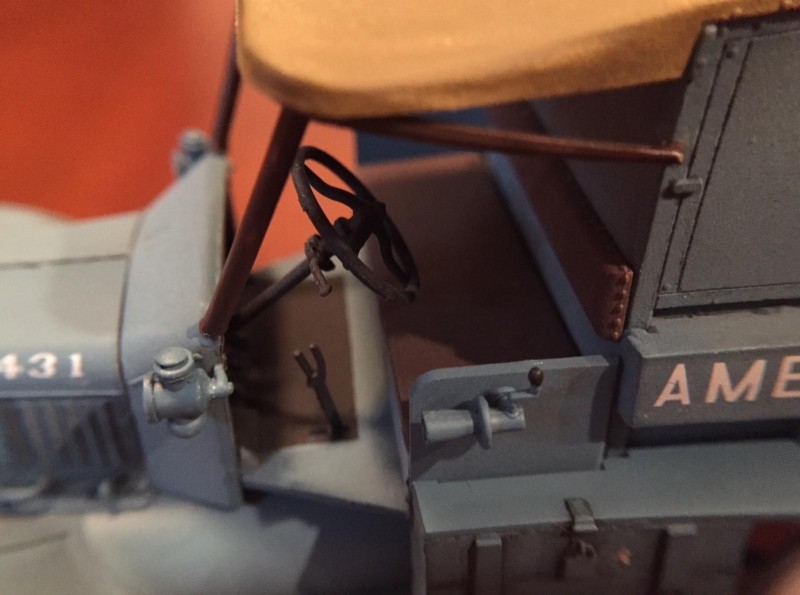


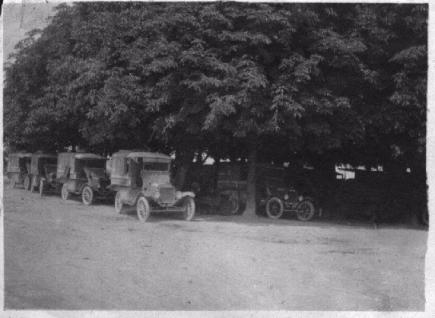

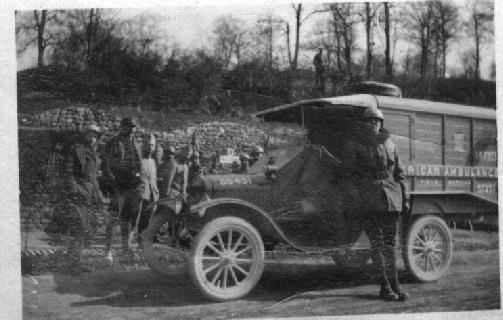
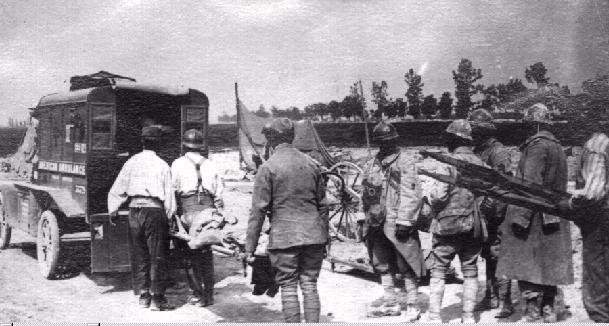
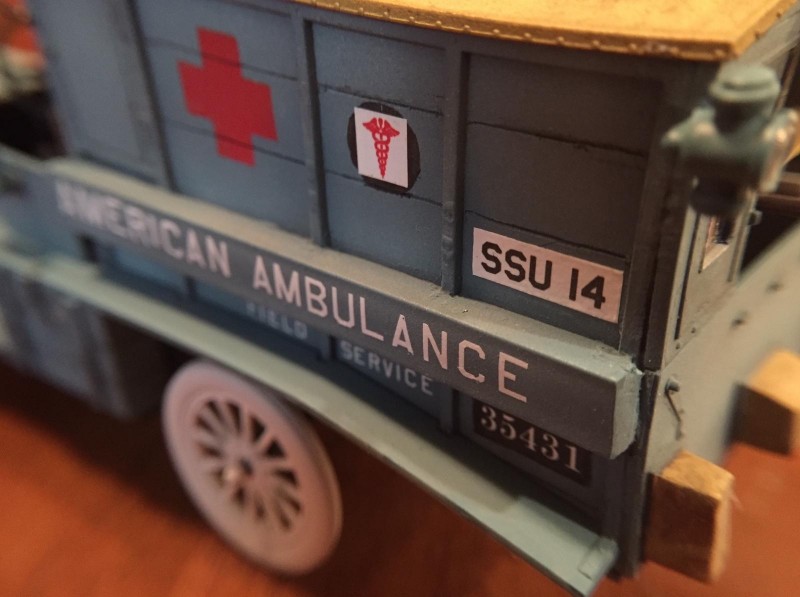
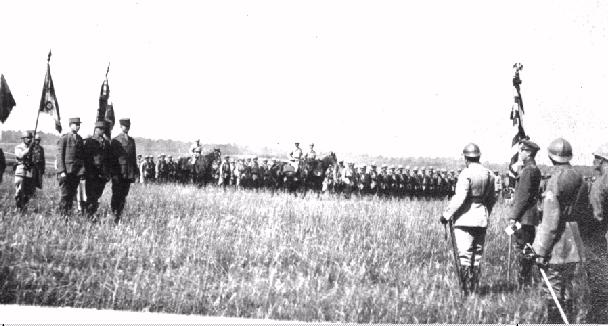
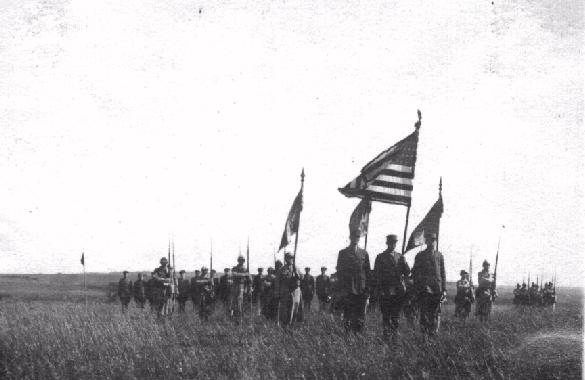
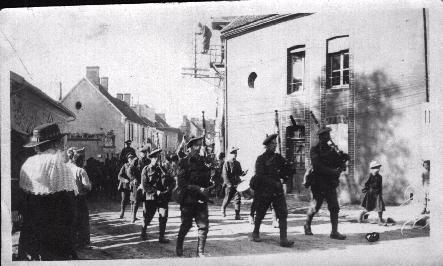

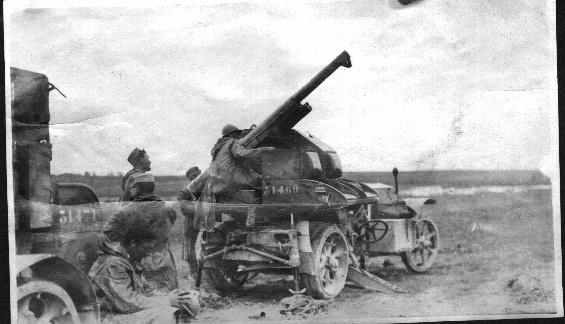
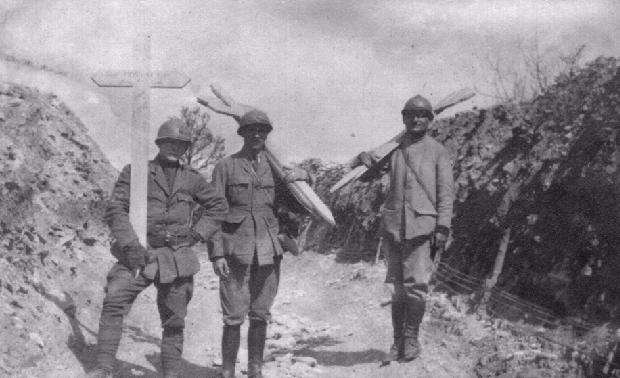
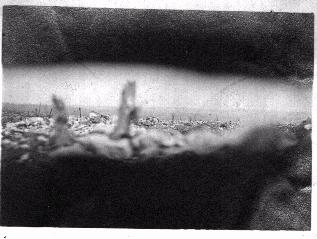

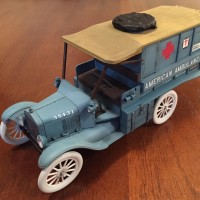
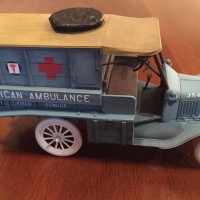
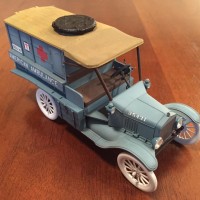

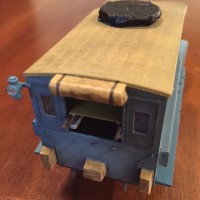
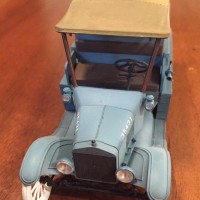
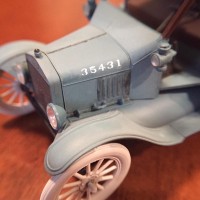
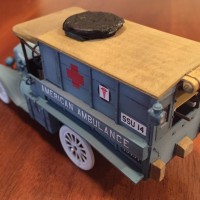

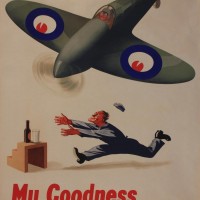
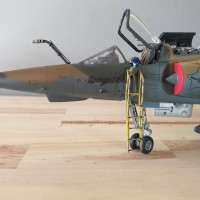

What a fantastic story ! Your Grandpa would be very proud of this ... and so should you.
You're absolutely correct, this is a gold mine of original era photos... even more so with the direct family link that you have with them. The one looking into "No Man's Land" is especially chilling to me... as it has a desolate look to it that captures the terrain these young men walked across too often, and many didn't return from. Another one like this is the photo with the crosses...
Simply stunning my friend. I really enjoyed reading the article, looking at your Grandpas pictures, and all of the details you have incorporated into the model.
Well done my friend...
Thanks, Louis! As the saying goes, "I know where the flaws are, and I ain't a-tellin'!" Some are obvious, though, and some modifications I just couldn't handle (for example, if you look at the original pics the "cap" of the rear section seems more permanent in my grandfather's unit vehicles--rounded at the edges rather than stretched canvas). In the end the whole thing is a rather tall order, but again, "replicate, not duplicate."
At the end of the day it's a nod to his legacy in the centennial of the Great War's conclusion. I appreciate your kind words.
What a great story David, excellent example of "living history". Being part of a little known portion of WWI, the Americans that were already in theatre before formal declaration. I love it. I cannot express how interesting and touching the story felt in my heart. The model in this case is not the focus point. But how important these ambulances were. Being a modeler we model tanks, equipment, ships and aircraft of an era most of us read about. Despite my age, the end of WWII was only 15 years past when I was born. (Isn't that a wild thought). This model represents not only a legacy of what took place in WWI yes a small part, but it is also a bit of your family legacy as well David. Being away from my core family here in California I know there is a lot I do not know of my uncles and family members that were in WWII and Korea. And this makes it much more important to trying to find out. Very inspirational, love it. Good work, great story. Thanks for sharing a bit of your family with us. God Bless
Thanks, Chuck. Much appreciated, and I agree: for all the romance and dash of the weapons of war that took lives, there's something powerful about these rickety little cans puttering along the dirt roads of France, saving lives one or two at a time--and ultimately thousands by sheer volume.
Louis' assessment was/is "spot-on", sir...a pleasure to read and view - nice work all around.
Much appreciated, Craig. Thanks for commenting.
David I just love this story. It sure ranks as one of the best I have read on Imodeler, simply because you have such a personal connection to the model and your grandfather. The story makes the model, as a subject of interest, even more interesting. I am a history fanatic so this is great stuff to read! The model is a fine tribute to your grandfather's legacy! Well done!
Very grateful for your comments, Morne. I'm nuts about history, too, and the small stuff humanizes the whole.
Hi Dave ,it's been a while pal! ,I really enjoyed reading your Grandfathers story and seeing the pictures, my own Great grandfather Pvt John William Pearson is buried in the cemtiere anglaise in the village of Perrone where he died one hundred years ago on the 2nd September 1918 about 9 days short of making it home , what a shame eh ?...
Anyhoo you made a really first class job of this kit and it's a much better size than the tiny little Austin K2 I recently posted, something to put on a shelf maybe next to a photo of Papa in your mancave.
Like I said great work Dave .N.
P.S. the photo of your granddad makes him look seriously cool ! as if Jimmy Dean somehow saw it and said to his manager "that's the look I'm going for"
Isn't he the coolest? But the story of your great-granddad is equally cool, and powerful in that "his bit" was his life, given for his country. And don't knock your Katy! You did a fabulous job on a much more challenging scale.
David. Great story and a great model. Thanks for sharing.
Thanks Anthony!
This is an exceptional post, David. Your passion (and compassion) are knitted through the story, those incredible photos, and embedded in the model. Truly impressive and a wonderful read.
I'd say more (I've been known to) but feel I'd only serve to dilute this seminal piece of work. Thank you for sharing, a genuine privilege.
You're a true friend, David. Much appreciated.
History and modeling on the level of personal history.
Great story. Thank you for sharing this.
Nice model too.
Coming from an artist like you, Ulf, that's saying a lot. Many thanks.
Nicely presented and a kit as well! Great post.
Thanks, Rob. That means a lot coming from you as the resident master of heritage photos. If you have tips on posting more of these photos, I'm all ears. I gave a mere sampling and there are some real gems in the collection.
You seem to have a handle on things just as it is. I think the combination of personal story, images and the model all work well together here, but would probably be difficult to sustain unless you’re modelling a themed series of builds.
That said, people always like to see unusual photos that inspire and educate. Go for it!
By the way, I think the aircraft flying over the church is a Caudron, probably the G.IV, which I’m modelling now.
Great job recreating your family's proud history! Fantastic model and details. I really enjoyed this article and all the history you shared. One of the best articles posted on this site. Lots of thought and work. Really enjoyed the original pictures.
Since I love everything you post, Paul, I am touched and grateful.
Hey David. Great story and wonderful build! Having a personal connection to the models "we" build is so special. They become so much more than just another kit to add to the shelf. And your post fits right in with my travels these past two days, I saw two of these ambulances (or very similar), one at the Pennsylvania Military Museum and one at the National Marine Corp Museum.
I agree, Gary. Fidelity to my subject was definitely informed by the personal connection. Perfectionism always raises its ugly head, but I tried to temper that with genuine concern for a sound representation, remembering in the end it is about a human subject close to me.
Definitely one of the best posts on this site. A great model, a greater story. This historian loved it.
Wonderful comment coming for a history aficionado like yourself, Tom.
Absolutely agree with TC, one of the very best posts ever shared on iModeler.
As a history lover, you've had my rapt attention! Wonderful modeling to go along with it. Just a fantastic post all around - congrats David!
You're a friend, Greg, and no mistake.
I think it has all been said - it is simply a wonderful post and build. While the story takes priority, and the personal archive is just so impressive, I love the model. This is one of my favourite posts on here (and any modelling forum I have looked at). Congratulations on a brilliant piece!
Many thanks, Paul. Now my bench is cleared and my Mossie awaits for the RAF GB!
An amazing story! A wonderful personal piece of history .A great build to boot.
Thanks for commenting, Robert.
David, Wonderful looking model, and what a wonderful story. The research you must have put into this must have been a lot of fun. Thanks for sharing !
Thanks, Terry. There's not as much on the AFS as I would like, but I found enough, further fueled by the photos and conversations with Mom, the get a decent idea of things. Thanks for your kind words.
Well Dr. Thomas you surely hit a grand slam on this build. Excellent family historical story, several pics to give it some visual reference along with a find looking model to complement it all. As the old cigarette commercial use to say,"you've come a long way baby." Well done sir.
Thanks so much, Tom. Means a lot coming from you. There's something about posting the pics that gets my "dark side" (perfectionism) riled up, irked by this or that. But I have to lay that stuff down and rest in the journey.